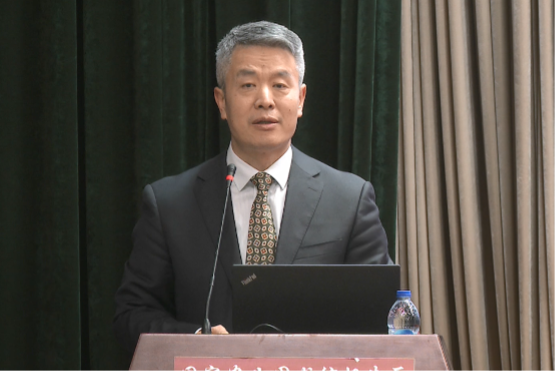"China to Advance 'Belt and Road' Construction with High Quality During the 14th Five-Year Plan Period"
On October 26, 2021, at the Fifth International Agricultural Research Conference, Zhang Jianping, Director of the Regional Economic Research Center at the Chinese Academy of International Trade and Economic Cooperation, delivered a keynote speech on "Global Development Trends and the Green Global Value Chain." Zhang Jianping pointed out that the current global economic and trade pattern is undergoing a reshaping process, roughly forming an economic and trade relationship triangle among China, the United States, and Europe. China supports the development of globalization and regional integration, hoping for mutual learning among diverse civilizations to create a multi-level global framework, a stance that has been highly recognized by countries worldwide. The COVID-19 pandemic has become the biggest uncertainty for global and Chinese development, significantly impacting China's "going global" in agriculture and international trade in agricultural products. In the context of the new global development trends and China's dual circulation strategy, international cooperation remains crucial. During the "14th Five-Year Plan" period, China needs to promote the construction of the "Belt and Road" initiative with high quality. Zhang Jianping summarized the open and inclusive characteristics of the "Belt and Road" from four aspects: "philosophy of cooperation, space of cooperation, fields of cooperation, and modes of cooperation." He introduced two essential understandings of the "Belt and Road": firstly, it is China's initiative, not a strategy; secondly, it is not a single road or belt but a network of numerous routes and belts interwoven, forming a vast international economic cooperation platform. He encouraged companies to aggregate development through international industrial parks in "Belt and Road" countries, jointly addressing potential risks and challenges, and enhancing the efficiency and level of development. In the past seven years, the trade and investment potential of "Belt and Road" countries has been continuously unleashed. In 2020, ASEAN surpassed the EU to become China's largest trading partner, thanks to the upgraded China-ASEAN Free Trade Agreement, including policy dialogues, infrastructure connectivity, the construction of green channels for agricultural products, two-way trade and investment, international industrial parks, and cooperation in production capacity with "Belt and Road" countries. In the future, under the framework of the Regional Comprehensive Economic Partnership (RCEP), the EU and ASEAN are expected to achieve high levels of trade and investment growth in various fields. In the agricultural sector, ASEAN countries, as a key and pivot region, need to strengthen cooperation to promote high-quality development in agriculture.





